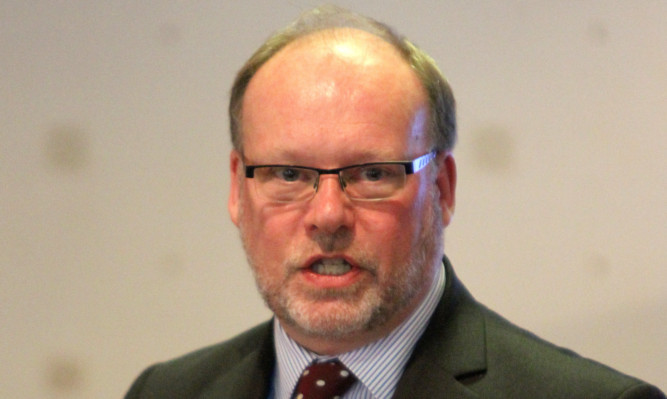Angus Council’s chief executive has warned the local authority cannot afford to be weighed down by “too much bureaucracy”.
Richard Stiff said it is important the council becomes an organisation that can be “flexible, not complex and certainly not rigid.”
Mr Stiff has been getting together with a group of colleagues from across council services since taking up his role, as part of the programme of listen and learn meetings he set up.
The one-hour sessions have been hugely useful to Mr Stiff, he said, in getting to know more about how the organisation thinks.
Mr Stiff was speaking after the latest meeting, which addressed bureaucracy and process in the local authority.
He said: “I recall a front cover photograph from New Society magazine 30 years ago that showed a forlorn worker at the Indian State Railways ticket refund office surrounded and partly buried by mountains, literally, of files and paperwork. He looked less than happy and was probably dealing with claims from before partition in 1947.
“The dictionary definition of bureaucracy talks about ‘complex rules and regulations applied rigidly’ and that’s what we talked about.
“I guess the question for everyone in a public service role now is: how much of your time do you spend on fuelling the organisation’s systems and processes and how much on delivering or supporting the delivery of a service?
“In simple terms: we can’t afford too much bureaucracy. But we do need right and proper processes that show how a decision was arrived at and how the tax pound got spent.
“Much of our governance machinery is focused on those legitimate tasks but a lot of our bureaucracy dates from an era when we could take time and resources to “administer”.”
Mr Stiff said things were previously recorded on paper and processed through a number of colleagues before IT and communication systems were brought in.
He said: “These tasks can now be completed in minutes, or even seconds, leaving us more time to do the thing we are really here to do if we choose to do things that way.”
Angus Council is in the second phase of a major management shake-up that has seen its top-level team cut to three strategic directors. Half a dozen top officials were given a golden handshake from the authority in a one-off pay-off programme totalling £672,000 and the restructure will result in annual savings of around £360,000.
Directors Colin McMahon (corporate services), Neil Logue (education), Eric Lowson (infrastructure services), Ron Ashton (neighbourhood services), Dr Robert Peat (social work and health) and the council’s assistant chief executive, Hugh Robertson, retired on March 31.
From the start of this month, the council moved to a three-department structure divided into people, communities and resources.
Mr Stiff said: “Our council’s change process has several facets, the obvious one is the management structure we are now into phase two.
“But perhaps a more important feature is the transformation of the council into an organisation that can be flexible, not complex and certainly not rigid. Not a bureaucracy. Well, at least not any more than it needs to be.”
